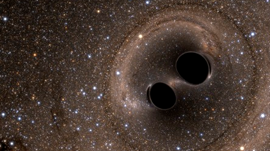Melbourne’s Swinburne University of Technology announced plans of a new supercomputer that will be used to power research into astrophysics and gravitational waves, with the university seeking to further prove the science behind Einstein’s theory of general relativity.
“While Einstein predicted the existence of gravitational waves, it took one hundred years for technology to advance to the point they could be detected,” said Professor Matthew Bailes, director of OzGrav at Swinburne University of Technology. “Discoveries this significant don’t occur every day and we have now opened a new window on the Universe. This machine will be a tremendous boost to our brand-new field of science and will be used by astrophysicists at our partner nodes as well as internationally.”
Dell EMC will build the $4 million supercomputer named OzSTAR and it will be feature 115 of their PowerEdge R740 nodes, each of which will be equipped with two NVIDIA Tesla P100 GPUs. The machine will provide more than 1 PetaFLOPS of capacity, or 31 million years of calculations in one second.
The supercomputer will be used to analyse data generated by the Advanced LIGO observatory, which first detected gravitational waves.
According to Dell EMC, up to 35% of the supercomputer’s time will be spent on OzGrav research related to gravitational waves. The supercomputer will also continue to incorporate the GPU Supercomputer for Theoretical Astrophysics Research (gSTAR), operating as a national facility for the astronomy community funded under the federal National Collaborative Research Infrastructure Scheme (NCRIS) in cooperation with Astronomy Australia Limited (AAL). In addition, the supercomputer will underpin the research goals of Swinburne staff and students across multiple disciplines, including molecular dynamics, nanophotonics, advanced chemistry and atomic optics.
OzStar replaces the “green” machines that have served Swinburne for the last decade and seeks to further reduce Swinburne’s carbon footprint by minimizing CO2 emissions by carefully considering heating, cooling and a very high performance per watt ration of power consumption.
Read more >










